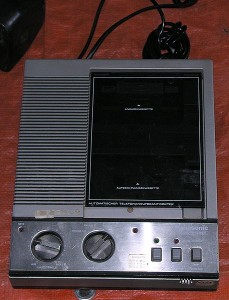I called someone at the city today and my call got sent to what sounded like an ancient voicemail system. I was subjected to a lengthy computerized lesson on how to leave a message and it struck me as so totally irrelevant here in the year 2010.
Answering machines have been around a long time. A man named Vlademar Poulsen invented the first one in 1898. Dubbed the telegraphone, it was a manually-operated means of recording a telephone conversation. It wasn’t until 1935 that a machine that could answer itself was invented by Willy Muller. It was later still (1960) before answering machines were first sold in the U.S.
My first exposure to answering machines was in the mid 70s, watching The Rockford Files. The show always opened with a funny message left on Jim Rockford’s machine. (The Rockford Files was cocreated by the legendary producer Stephen J. Cannell, who passed away last week).
My family got its first answering machine in the early-to-mid 1980s, if I recall. It was the mid-80s before I left my first “phonemail” message when calling my dad’s number at IBM. I still remember how amazed I was at that first call.
The dual-cassette tapes used in early recorders gave way to flash memory models. Most of these early digital ones had horrible sound quality as manufacturers skimped on memory storage to save money. I traded up around 2002 from a standalone answering machine to a computer-based model using the Asterisk PBX software. My computer has been answering calls ever since, all of which arrive as packets on the Internet and are then converted to the same analog technology that’s been ringing telephones for over 133 years.
All of this by which to say that, in light of the answering machine’s long history, do we really need to keep telling people how to use them?
